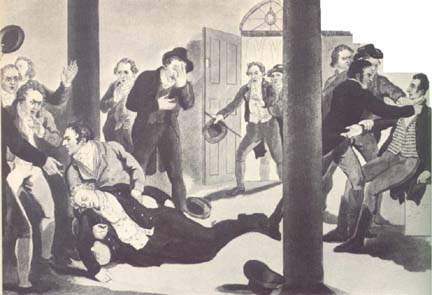G.K. Chesterton used the term moor eeffocish to describe the queerness sometimes glimpsed in familiar things. He borrowed the phrase from Charles Dickens, who as an unhappy child would sometimes sit in a coffee shop in St. Martin’s Lane:
In the door there was an oval glass plate with ‘COFFEE ROOM’ painted on it, addressed towards the street. If I ever find myself in a very different kind of coffee-room now, but where there is such an inscription on glass, and read it backwards on the wrong side, MOOR EEFFOC (as I often used to do then in a dismal reverie), a shock goes through my blood.
J.R.R. Tolkien later wrote: “The word Mooreeffoc may cause you to realise that England is an utterly alien land, lost either in some remote past age glimpsed by history, or in some strange dim future reached only by a time-machine; to see the amazing oddity and interest of its inhabitants and their customs and feeding-habits.”


